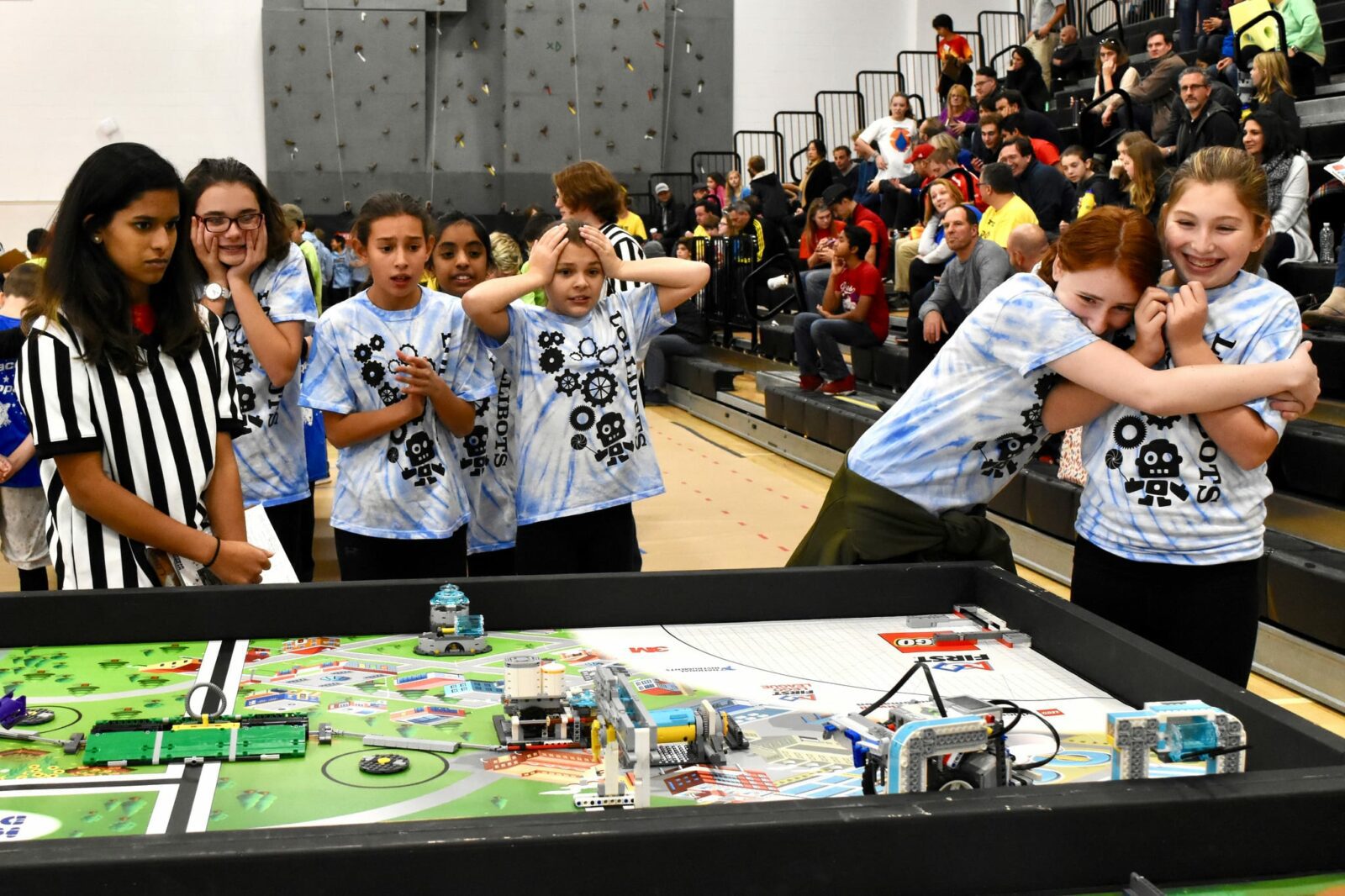A curiosity for technology was in the air at the recent Boston STEM Fair for parents and kids. The goal was to raise awareness for science, technology, engineering and math, and introduce families to a wide variety of excellent programs, including coding, robotics, rocket design, science, tech entrepreneurship and more.
Today, I am going to recap six main themes from the stem fair because even if you were not able to attend the event, everyone can benefit from knowing about different ways to get their children involved in STEM.
1. Join a Robotics Team

I am a big proponent of FIRST, the international robotics organization for students started by Dean Kamen 28 years ago. Dean Kamen is the inventor of the Segway (self-balancing scooter) and holds more than 440 patents, many of them for medical devices. However, he considers establishing FIRST as his proudest accomplishment.
Part of FIRST’s mission is to do community outreach and inspire the next generation to explore technology, and at the Boston STEM Fair, there were two robotics teams exhibiting. Everyone loved the demos and the teams were were mobbed with interest.
I can’t speak highly enough about this program– if you want your child to learn about robotics, engineering, coding, teamwork, business, marketing, fundraising, competition, and get experience learning how to run a company (for the high school teams), FIRST delivers on all those aspects.
Programs are available from Kindergarten through high school. Visit these links to find a team in your area:
- FIRST LEGO League Jr. (Ages 6-10)
- FIRST LEGO League (Grades 4-8)
- FIRST Tech Challenge (Grades 7-12)
- FIRST Robotics Competition (High School)
Learn why FIRST is such a valuable program: Life Skills Teens Gain From Being Part of a FIRST Robotics Team
Want to start your own team? Learn how.
Summertime is a perfect time for kids to follow their curiosity and discover their passions. It’s a time when kids can try something new and take classes, develop skills and go deeper into a subject matter that truly interests them. Without the demands of the school year, I feel like summer is the time to explore and gain new experiences, without the pressure of school, homework, grades and other activities.
Each summer, my daughter attends one or two STEM summer camps. I believe in “learn by doing,” so I try and find programs that are hands-on and project focused. Over the years, she has built robots, learned Java, and designed video games. The learning component is important to me but even more important is that she has fun and gets to be with kids and instructors who are excited about STEM.
There are many ways your child can pursue STEM during the summer and get experiences through at-home activities, programs at libraries, and through organizations, schools and universities that offer camps.
Here are some ways to get your kids involved in STEM over the summer:
- Look at your library’s event calendar for STEM programs. Many libraries support these kinds of programs– and they are free!
- Sign up for a monthly STEM DIY kit to be delivered to your home. Here are some kit ideas: Kiwi Krate and Steve Spangler Science.
- Take a free online computing class through Kahn Academy.
- Attend a STEM camp. Here are a number of companies with nationwide locations: iD Tech, Digital Media Academy, Educated Unlimited, Emagination Computer Camps, i2 Camp and Zaniac Learning.
- Get ideas for at-home STEM projects.
- If you live in Massachusetts, here is a list of over 100 STEM summer camps.
3. Learn to Code
Learning to code is more accessible than ever and there are man y ways to go about it. Children in elementary school are learning the fundamentals of programming with Scratch, a free visual programming language. Scratch is just one way to start and a good launching point for young children. There are many ways to develop coding skills:
y ways to go about it. Children in elementary school are learning the fundamentals of programming with Scratch, a free visual programming language. Scratch is just one way to start and a good launching point for young children. There are many ways to develop coding skills:
- Start by inquiring with your school system and ask if they offer coding classes and in which grades. If they do, spend time reviewing the curriculum so you can see what your kids will be learning.
- If you are looking to develop your child’s skills out of school, there are many options today. Here are a few ideas:
- Learn to code through game design. Kids love computer games, so this is a great way to engage them. Game design with Minecraft is very popular.
- Learn a particular language, such as Python or Java, both of which are popular, general-purpose programming languages.
- Join a coding club, like Girls Who Code.
- Learn to code with online, educational websites likes Codecademy, Code.org, Tynker and Khan Academy.
- Take a class through a library, company or private instructor.
4. Add “Art” to STEM
Incorporating “Art” as a component in STEM (aka “STEAM“) is an offering I see more frequently today. Imagination, creativity and design are key elements in many of today’s most innovative products and services. If you have a child who might be resistant to trying a “STEM” program but they enjoy art, look for an after-school program or summer camp that specifically incorporates art. It might be the hook they need.
5. Become an Entrepreneur
Most of today’s biggest breakthroughs have come from or have been touched in some way by technology innovation. Getting kids exposed to the idea of starting a company and bringing a product or service to market is another way to get them interested in STEM. I also think the TV show, Shark Tank, has gotten a lot of kids thinking about inventing products and figuring out how they can build a business.
If your child is interested in technology, new products and business, look for an entrepreneurship program. Camp BizSmart offers programs in CA and TN; GreenApple Campus has programs in Massachusetts; and Epiic Solutions holds programs in Boston, MA.
Is your child thinking about majoring in science, technology, engineering or math in college? If so, there are many things to consider in advance. For example, which classes should they take in high school; what kinds of school year and summer activities will make them stand out; and what type of fields interest them?
With over four thousand colleges and universities in the U.S., the college process can be daunting. Here are a few resources to help:
- Tips for preparing a middle school student for a STEM education
- Learn about the benefits of a STEM high school
- Collegewise’s guide to “College Planning for Students Considering Majors in Science, Technology, Engineering and Math”
On a personal note, it was wonderful to see such a strong turnout at the Boston STEM Fair and observe the enthusiasm for technology and interest to learn. My goal is to get kids excited about STEM at a young age and based on what I saw on the day of the fair, there were many “Future Techies” in the room!









